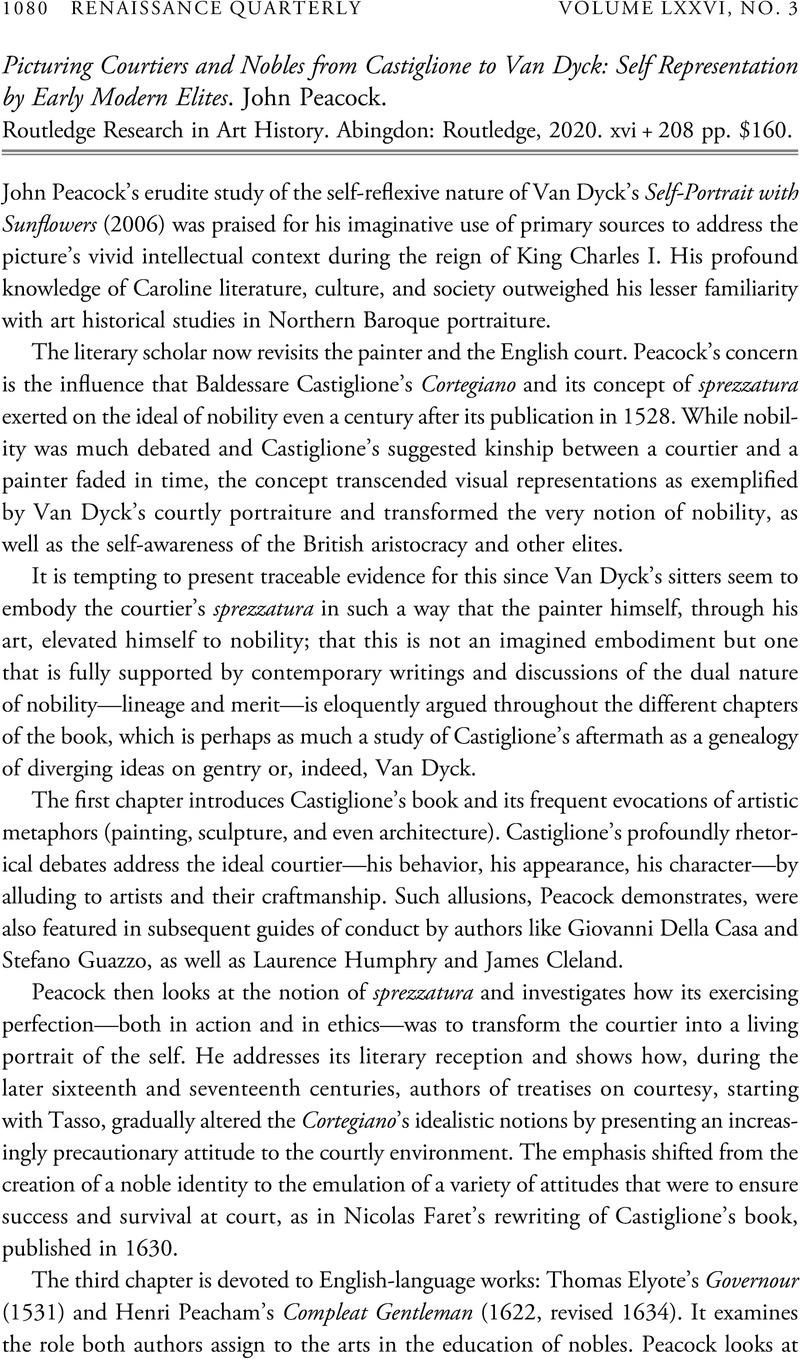No CrossRef data available.
Article contents
Picturing Courtiers and Nobles from Castiglione to Van Dyck: Self Representation by Early Modern Elites. John Peacock. Routledge Research in Art History. Abingdon: Routledge, 2020. xvi + 208 pp. $160.
Review products
Published online by Cambridge University Press: 15 November 2023
Abstract

- Type
- Review
- Information
- Copyright
- Copyright © The Author(s), 2023. Published by the Renaissance Society of America



